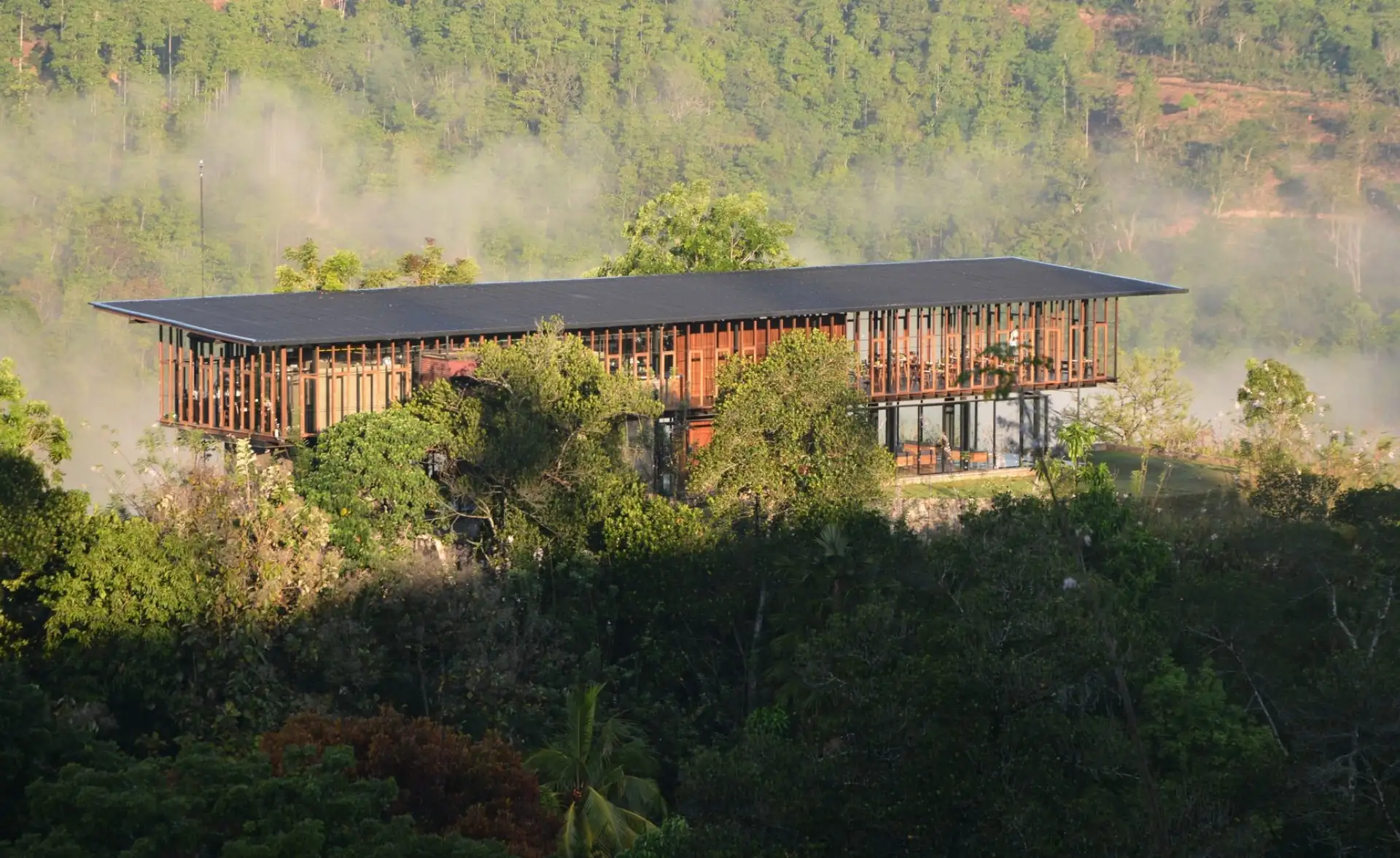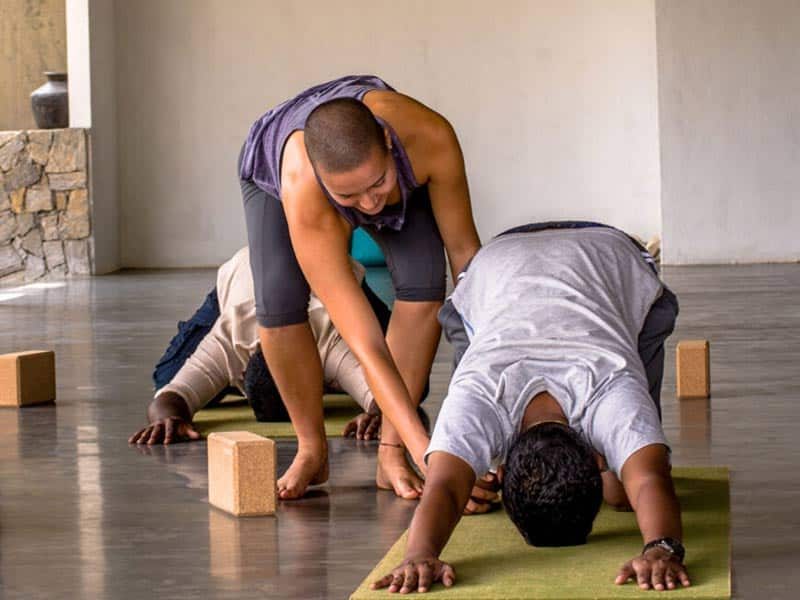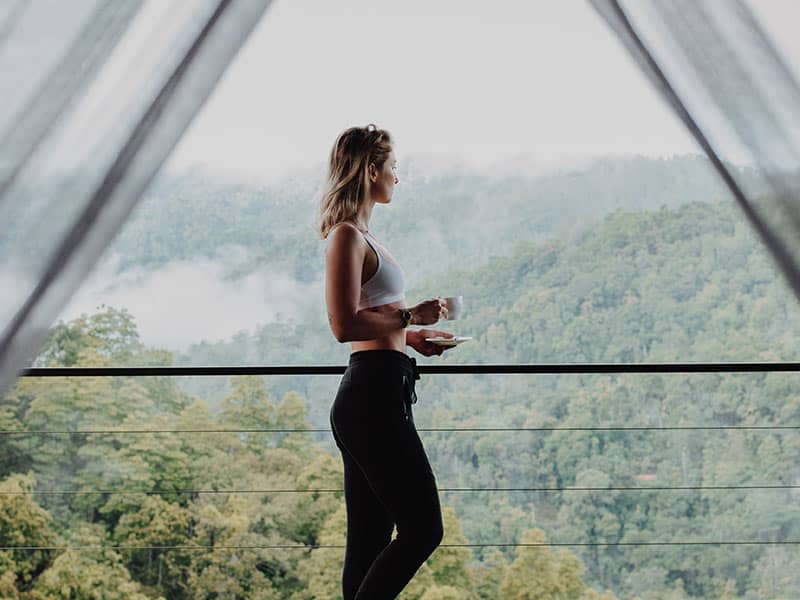A Santani Guest’s Experience
| Guest Details | Male / 42 years |
| Diagnosis | Acute Frozen Shoulder, the patient could not lift his arm above his shoulder. |
| Results | Able to rotate his arm 360 degrees without any pain or stiffness. |
“Two weeks later, back home, my wife noticed how I could easily put a full crate of drinks on a shelf, ride my bike and sleep without any problems: my shoulder pain was gone! I could suddenly (and still can) rotate my arm 360 degrees, exercise, work, and sleep. The holistic treatment at Santani, which includes not only the body but also the mind and soul, has achieved what my top-class doctors here in Germany had not been able to do for two years!
I just spent my second 3-week-stint at Santani and I’m feeling better than ever!”
Early improvements in John’s condition saw his body relax and soften, relieving muscle tension and stiffness through an Ayurveda medicated oil massage (Abhyangam) followed by Choorna Swedana, and Udwarthanam which are good for the breakdown of excessive fat in adipose tissues, and Patra Panda Swedana to release joint stiffness and to reduce inflammation. Repetition of Pizhicil with Vata soothing oils were performed to eliminate impurities through the skin and at the end, Shashtika Pinda Swedana was done for the nourishment and rejuvenation of the body and joints.
To reduce stress and to obtain a balanced mind, John participated in Hatha yoga daily and was offered several meditation sessions to restore mental and spiritual well-being. Physical fitness and daily activity levels were improved by a series of guided walks which were progressive in intensity. At the end of three weeks, his pain and functionality of the right shoulder joint had slightly improved, he looked energetic, mentally happier and enthusiastic about returning home to engage in his daily life.
The results of the Ayurveda treatment were gradual and set in about two weeks later. He was able to rotate his shoulder joint without any pain and was able to lift heavy objects easily. He reported that he was also able to take part in physical activities like cycling and windsurfing etc. without any difficulty. He was back to his regular lifestyle after 3 weeks of Ayurveda and even after one full year post-treatment the pain had not resurfaced. John not only avoided undergoing risky surgery, but he also got his life back.

What is Arthritis/Osteoarthritis?
Arthritis means inflammation or swelling of one or more joints. But the term arthritis is often used to describe any disorder that negatively affects the joints. There are several types of arthritis. Common types include Ankylosing Spondylitis, Gout, Childhood Arthritis (Juvenile Arthritis), Osteoarthritis, Psoriatic Arthritis, Reactive Arthritis, and Rheumatoid Arthritis. Among these, Osteoarthritis and Rheumatoid arthritis are the two main types of arthritis that commonly present clinically. Specific symptoms of arthritis vary depending on the type of arthritis and may include:
- Pain
- Stiffness
- Swelling
- Redness
- Decreased range of motion
Usually, the major complaint is joint pain and stiffness. Osteoarthritis limits daily activities such as walking, dressing, bathing, etc. The effect of this disease causes loss of functions as well as deformity of the joints, especially weight-bearing joints.
Ayurveda for Arthritis/Osteoarthritis
In Ayurveda these clinical signs and symptoms are described under the disease of Sandhigatha Vata, classical symptoms include pain (Shula), swelling (Shotha), stiffness (Stambha), cracking of the bones and joints (Sphutana), chronic pain and immobility (Akunchana Prasarana Vedana) of the joints. The disease occurs due to the aggravation of ‘Vata’ which eventually causes the degeneration of tissues. These causative factors include the excessive intake of dry, cold, light food or not consuming enough food, sleep deprivation, excessive physical exercise, physical or emotional trauma, excessive fasting, suppression of urges, weakening due to excess stress, sorrow, grief, etc. As this disease is chronic in nature, food, lifestyle and medicine influence relieving and aggravating the symptoms of Sandhigatha Vata. The objective of treating this disease is to decrease pain while attempting to maintain or increase the range of motion of the affected joint and to improve quality of life.
Traditional Ayurveda medicine uses an individualized pharmacogenomic assessment based on the Prakruti (body type) of the patient. An effective line of treatment for diseases caused by Vata includes oleation (Snehana) and fomentation (Swedana) at the beginning if there is no possibility of occlusion (Avarana). Repeated oleation and fomentation is beneficial for the softening of the body and to restore Vata to a balanced state. Elimination therapies like enema (Basti), nasal drainage (Nasyam), and purgation (Virechanam) can be performed as internal treatments to remove impurities from within the body.


